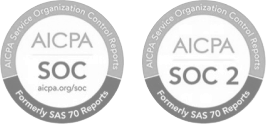Choice of Financing (Reimbursing Analysis)
Article Navigation
The Choice of Financing determines how employers fund unemployment insurance obligations. Eligible nonprofit and governmental entities can either pay state unemployment taxes or reimburse the state for actual benefit costs. A reimbursing analysis evaluates which option provides the most cost-effective and sustainable financing strategy. Selecting the correct model impacts budgeting, risk exposure, and compliance obligations.
Reimbursing vs. Taxable Employer
- Reimbursing Employer: An employer that elects to reimburse the state for actual unemployment benefits paid to former employees rather than paying regular state unemployment tax contributions.
- Taxable Employer: An employer that contributes to the unemployment insurance fund through a fixed tax rate applied to employee wages, based on state experience ratings.
- Benefit Cost Reimbursement: The total amount repaid by a reimbursing employer to the state for unemployment benefits charged to its account.
- Unemployment Tax (UI Tax): A payroll-based contribution that taxable employers pay to support state unemployment funds.
- Experience Rating: The method used by states to calculate a taxable employer’s contribution rate based on claims history and turnover performance.
- Self-Insurance: An alternative risk management strategy where an employer directly finances benefit obligations, assuming full responsibility for associated costs.
Analysis and Risk Assessment
- Reimbursing Analysis: A financial evaluation comparing potential reimbursement costs with projected unemployment tax contributions to identify the more efficient funding option.
- Financial Risk: The potential for unpredictable cash flow impacts due to unexpected unemployment claims under a reimbursing model.
- Cash Flow: The availability and timing of funds to cover unemployment obligations, particularly critical for reimbursing employers who pay claims as incurred.
- Claim Management: A process that includes monitoring unemployment claims, contesting improper charges, and maintaining accurate records to minimize costs.
- Mitigation of Risk: Actions such as maintaining reserve funds, outsourcing claims management, and implementing workforce stability measures to control financial exposure.































 Back
Back